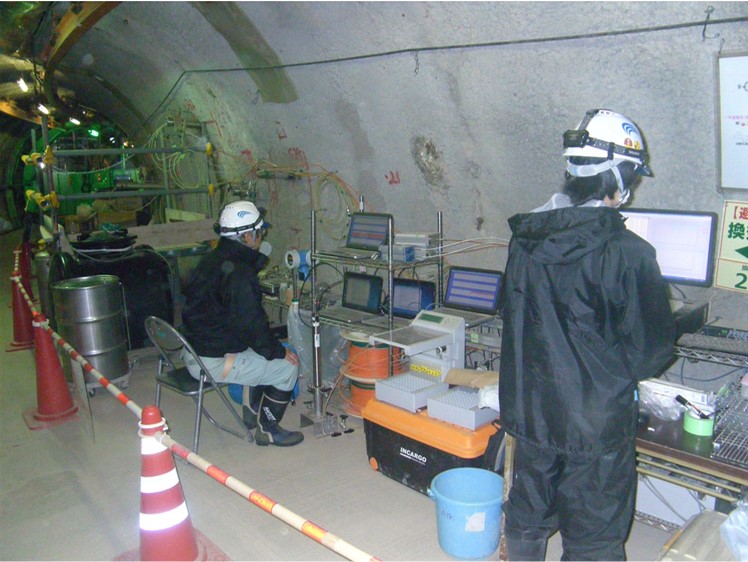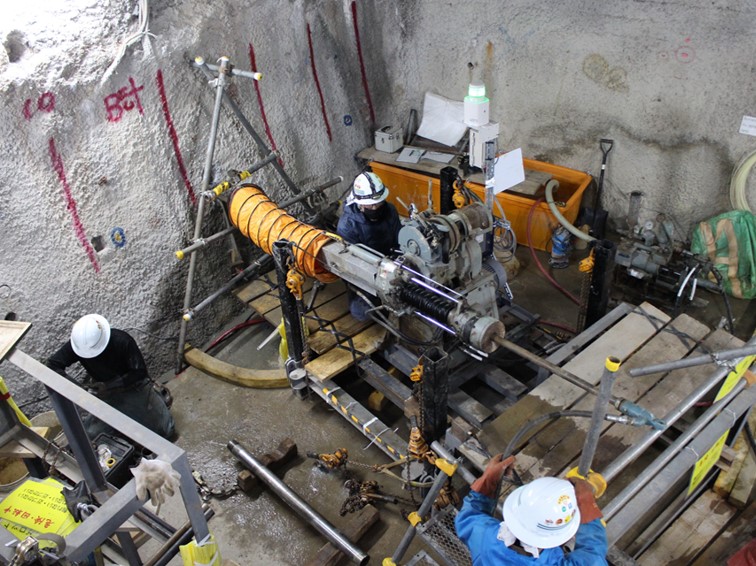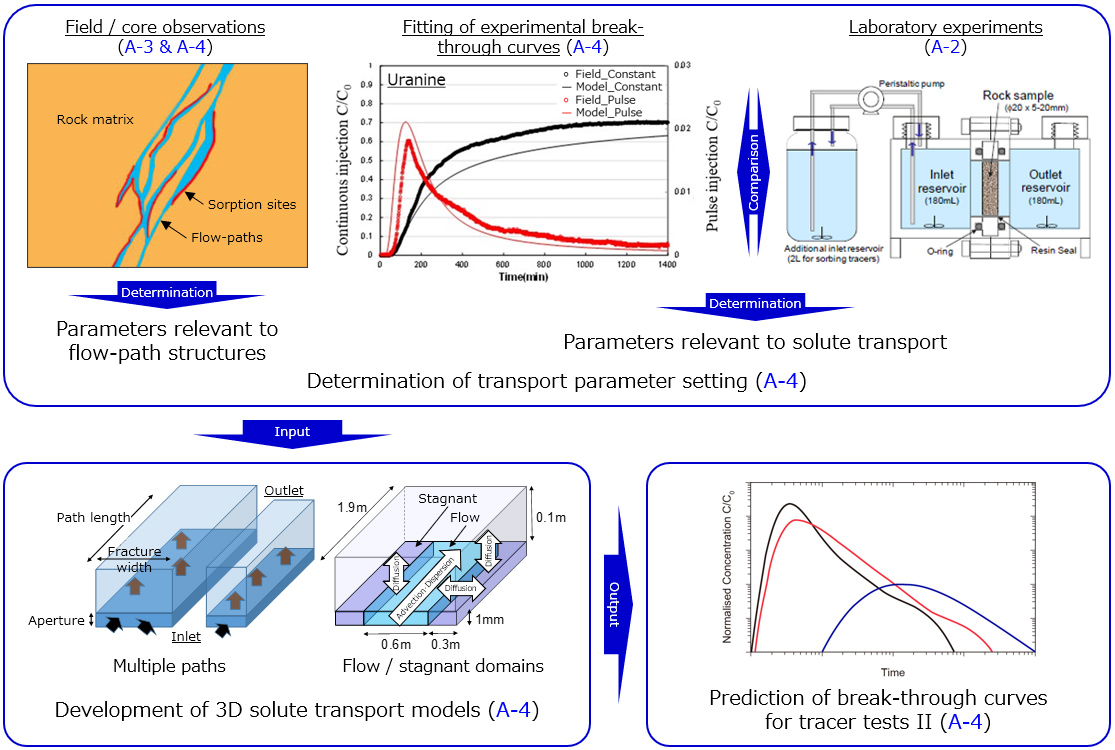Task A: Solute transport experiment with model testing
Introduction
Attempts have been made to enhance the technical reliability of solute transport models for repository safety assessments by tracer tests at in situ conditions. In general, the results of tracer tests are often modelled to produce a set of ‘best fit’ values for the transport parameters by comparing calibrated model curves with the experimental breakthrough curves but the modelled values are not always a unique solution. This could be due to that the actual structures and processes of relevance to solute transport are unknown and hence these are represented in the solute transport models with effective parameters in a relatively simple manner. It is thus suggested that detailed, realistic information on the relevant structures and processes should be obtained through a series of tracer tests and the subsequent rock characterisation at the in situ conditions. This would allow the models and model assumptions to be rigorously tested and then the technical reliability of the models could be enhanced.
The main aim of this task is to develop more realistic 3D solute transport models that can be applied to repository safety assessments for fractured porous sedimentary rocks.


Subtasks
- A-1: Preparatory work
- In preparation for the planned in situ and laboratory experiments, multi-packer systems are developed, the location and layout of boreholes are decided and tracers are selected.
- A-2: Supporting laboratory experiments
- Through diffusion and column experiments are carried out to determine Kd and De values for the selected tracers.
- A-3: In situ experiment at Site I
- Boreholes are drilled as designed at the Site I and the site boundary conditions are then defined. Tracer tests I under different flow conditions using the selected tracers and subsequent overcoring are carried out to characterise the actual structures and processes of relevance to solute transport.
- A-4: Model development and predictive modelling
- The success criteria for model testing is defined. A realistic 3D solute transport model is developed with appropriate transport parameters on the basis of the results of the previous laboratory and in situ experiments and the predictive modelling of tracer tests II is then carried out.
- A-5: In situ experiment at Site II
- Boreholes are drilled as designed at the Site II and the site boundary conditions are defined to confirm the consistency in such conditions between the two sites. Tracer tests II under different flow conditions using the selected tracers are carried out.
- A-6: Model testing and refinement
- A comparison between the predictions and the observations is made to assess the predictive capability of the developed 3D solute transport model. Model testing results are then compared between different modelling techniques to identify and reduce the conceptual uncertainties for further model refinement.

